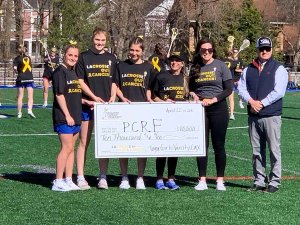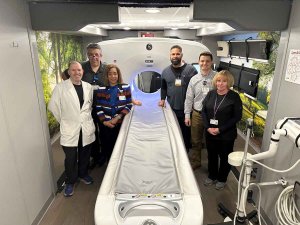Shin splints describe the third most common injury that impacts a runner’s training. Published studies have shown that shin splints account for 6–16% of injuries among runners.
Shin splints can be described as “exertional lower leg pain.” Most commonly it is related to the soft tissue (muscles) but can also be a sign of a stress fracture or compartment syndrome. More specifically, it refers to an anatomical site of periostitis.
Periostitis is a medical condition caused by inflammation of the periosteum, a layer of connective tissue that surrounds bone. The condition is generally chronic and is marked by tenderness/pain and swelling of the bone. This condition typically affects people who run, repetitively jump, or lift heavy weights.
Pain in the front of the shin region is typically the “anterior tibialis” muscle.
Pain in the inner aspect of the lower leg is often called “Medial Tibial Stress Syndrome.”
The Medial Tibial region (inner calf) is often thought to be either tibial periostitis, tibial stress fracture or microfracture or distal deep posterior chronic compartment syndrome. Available information suggests that the medial tibial stress syndrome most likely represents a periostitis at this location of the leg.
Risk Factors
Risk factors that play a part in sports injuries can be categorized as either intrinsic (or personal) risk factors, such as anatomic variations and physical fitness, or extrinsic (or environmental) factors related to the type of sport, such as the status of the field or running surface.
Numerous reviews published about factors associated with lower limb injuries among runners, generally agree that several risk factors may be associated with injuries.
These factors include:
• lack of running experience
• competitive running
• excessive weekly running distances
• poor physical condition
• previous injury (specifically shin splints)
• female
• Increased BMI
• Increased navicular drop (i.e. an indicator of pronation in the foot)
• ankle plantarflexion ROM
• Greater hip external rotation ROM (in males only)
Although there are commonly held beliefs about the best solutions to prevent and/or treat shin splints, there is little objective evidence to support the widespread use of any existing interventions to prevent shin splints.
A randomized controlled study conducted among more than 1500 Australian military recruits found no decrease in injury risk with stretching. In fact, there is evidence that stretching may affect performance adversely.
Another sensitive subject is the use of orthotics. Although there is a time and place for the use of orthotics, foot orthoses were NOT found to be effective for preventing soft-tissue injuries like shin splints.
In the recent past, it has also become popular to hear the benefits of “shock-absorbing” shoes or insoles, but no evidence was found to be effective for preventing any injury.
I was unable to find any study using prophylactic programs for the prevention of shin splints that were effective.
Similarly, regarding common treatment options, the evidence of effectiveness for any interventions is limited.
Review after review that I examined yielded that the most effective strategy for dealing with shin splints is “conservative therapy.”
The main goal of therapy should initially aim to correct functional, gait, and biomechanical overload factors. In other words, strengthen where weak, modify foot strike position (i.e. avoid toeing out), and modify mileage and/or frequency of runs to reduce overloading the system.
Recommendations/Exercises
The solutions that I have used focus primarily on identifying the source of the runner’s symptoms. Most commonly I have found the medial compartment to be related to the soleus, flexor digitorum longus, or posterior tibialis. In truth all muscles of the calf and foot are used with running but based on where the patient feels the most symptoms, the likely culprit becomes easier to identify.
We follow the following steps:
1. Mobility First: This means improving tissue mobility and if there are any limitations in the joints of the foot or ankle, we address those areas as well.
Foam Rolling: Spend about a minute per region and perform before EVERY run and on days off from running.
2. Stability/strength is second: Typically with the pain, there is the inhibition or avoidance of your normal strike and stride. This will affect the muscle’s ability to handle a load. It may seem like the calf would be strong due to the running, but often the shin splint is the clue pointing towards the weakness/imbalance of the muscles.
It is important to work on the calf strength with the knees straight AND knees bent.
Perform 3 sets of 10-15 reps 3x’s/week.
Progressively increase the resistance to challenge the muscles and progress to one leg at a time to ensure both legs are working equally hard.
3. Balance/proprioception is third: Due to the misinformation about the importance of “arch support” and the overuse of inserts/orthotics, the foot itself loses it’s natural ability to respond to forces and changes in terrain. Often too much cushion will negatively affect the reaction as well. In the end, the inability to sense what the foot is doing will lead to changes in gait and workload for lower leg muscles and contribute to shin splint pain.
Progress from balancing on one foot holding for 30 seconds 3-5 sets.
Next balance on one leg while kicking opposite in different directions around an imaginary clock.
Finally, try balancing on one leg while reaching to the floor and touching different targets in different positions.
Try all movements with no shoes and when you feel it is easy to try looking in different locations or closing your eyes.
Shin splints are the third most common injury complaints made by runners. Soft tissue injuries require improving mobility, improving strength, and working on your balance/proprioception.
Thanks for reading my articles. If you want to contact my office, please call 518-306-6894, email me at This email address is being protected from spambots. You need JavaScript enabled to view it., or at www.Goodemotept.com.





























 How to resolve AdBlock issue?
How to resolve AdBlock issue? 









